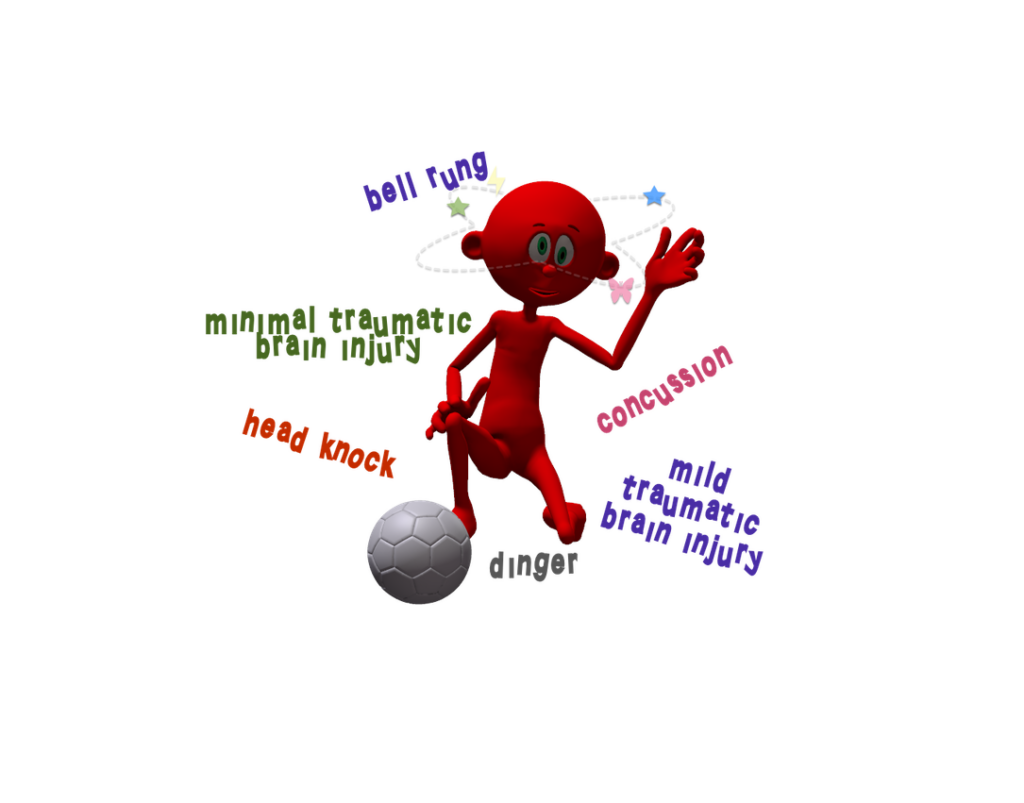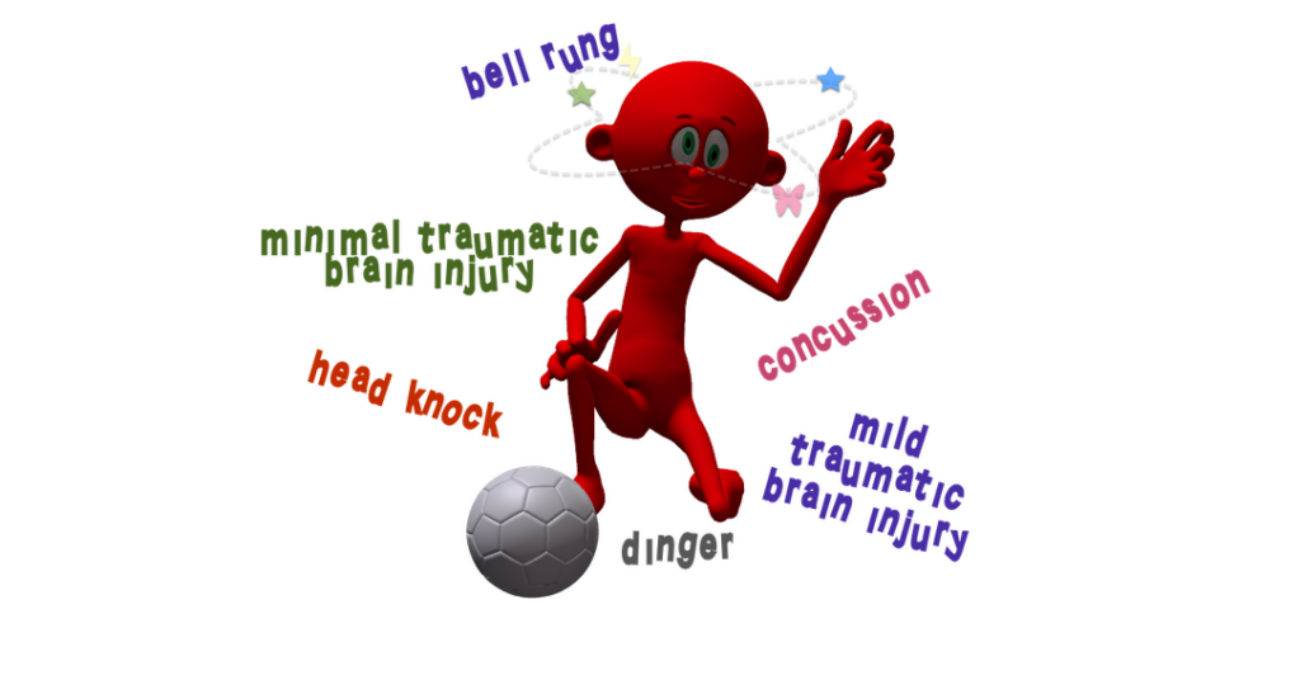Sports concussions (2)
Risks & management
RETIRED RUGBY PLAYER Interview with P Handcock, 2011
“…it’s just over 2 years now and I’m still feeling the effects of it. Lot[s] of headaches, [a] lot of fatigue – really sensitive to bright light. [My] memory is just absolutely shot to pieces…”
Retired professional rugby international
The risks associated with concussion
I’m not planning to tackle any possible links between head knocks and degenerative neurological conditions here (maybe a future blog!); instead, I’d prefer to focus on dealing with the recognition and management of concussion. Getting an accurate handle on the incidence of concussion is challenging. Concussions can result from any head impact etiology, but sport is probably the only domain where accurate statistics are kept. Even in organised sports, many concussions are not recognised and many more go unreported. Clearly, in sports where there are many high-velocity, high momentum impacts, the risks of suffering a concussion is elevated. For example, Rafferty et al (2018) found that on average, a professional rugby union player is more likely than not to sustain a concussion after appearing in 25 matches.
Rather than trying to dwell too much on the risk of suffering a concussion (we know that they happen too often), I think it is probably more worthwhile considering the risks associated with sustaining a concussion. To me, that risk falls into three (yep, three again!) main categories; the risk of sustaining another concussion, the risk of exacerbating symptoms and prolonging recovery, and the risk of musculoskeletal injury.

- Second concussion risk:
Asken et al (2018) found that around 50% of athletes either failed to report a possible concussion or were unaware that they had a concussion, and subsequently delayed leaving the game. Continuing to participate after sustaining a concussion is unwise due to the risk of suffering a second impact, and also because continued activity also seems to impact on eventual recovery time. The risk of another head impact seems obvious as the effect of a brain injury on vision, balance, and coordination surely has to predispose that individual to a greater risk of further injury. An intriguing example of this comes from Kawata et al’s (2016) project that had participants head a soccer ball 10 times (1 minute apart). Although the impact forces were pretty mild (only ~14.5g), participants’ vision was impaired for at least 24 hrs after those 10 headers. In a similar study, Di Virgilio et al (2016) replicated heading training (20 headers in 10 minutes) finding that these sub-concussive impacts produced acute changes to corticomotor and memory function lasting up to 24 hours.
Following a concussion, there are also neurometabolic changes that likely lower the threshold for subsequent head impacts to cause a concussion. How long that increased vulnerability lasts is an important question. McCrea et al (2017) argue that even after recovery appears to be achieved, there is still a likely window of vulnerability when the brain remains physiologically compromised. In this regard, some research has demonstrated an increased risk for a second concussion during the first 10 days following an initial concussion (e.g. Giza et al, 2017).
- Exacerbation:
Evidence for any adverse effect of continued exercise following a concussion has tended to come mainly from animal studies, but Asken et al (2018) found that individuals not immediately removed from a practice or game after sustaining a concussion, took 5 days longer to recover and return to play. So identifying concussions and immediately removing individuals from an activity is crucial for a number of reasons. - Musculoskeletal injury:
The relationship between musculoskeletal injury and concussion is an intriguing one. Cross et al (2016) found that concussed rugby players returning to play in the same season had a 60% higher injury rate than non-concussed players. In that study, the time to injury following a concussion was shorter (53 days versus 114 days). As compromised neuromuscular control and attention are acknowledged risk factors for injury, one can see that unresolved issues following a concussion could increase the risk of sustaining a musculoskeletal injury (Howell et al, 2018). An interesting wrinkle to this logic was provided by Hutchison et al’s (2011) finding that athletes with musculoskeletal injuries also had indications of cognitive decline immediately after an injury. It seems possible then that some of the cognitive impairment observed after a concussion might be due to factors other than the brain injury (e.g. pain and frustration at being sidelined).
In summary, it is important that concussions are recognised as soon as possible, that potentially concussed individuals are removed from activity as soon as possible, and that their recovery from the concussion is carefully managed before they are permitted to return to training and play. Improving our management of concussion
Obtaining an early diagnosis of concussion and getting appropriate information and management of the concussion are the keys to best practice for managing concussions. There is, however, an even more important precursor to those steps which is recognition. It appears that many concussions are simply missed and many others are not reported. Suggested reasons for failing to report a suspected concussion include a lack of knowledge on concussions (not thinking the injury was serious enough to report), not wanting to be removed from play, not wanting to let teammates down, believing that they could “tough it out”, and considering concussions to simply be an accepted risk of the sport (Beakey et al, 2018; Conway et al, 2018). Weber & Edwards (2010) make the important point that the terms that we use have an influence on the seriousness that head injuries are accorded. They suggest that while terms like ‘having your ‘bell rung’ might lead to better reporting of head impacts, that may mean that the injury is not taken as seriously as the term concussion. Mild traumatic brain injury (mTBI) is a less familiar but more accurate term that is probably interpreted as being greater injury severity, and could, in turn, be off-putting in terms of self-reporting.
Aside from familiarity and understanding, Weber & Edwards (2010) believe that terms influence injury-related expectations, and possibly the recovery progress and eventual outcome. While it seems that the seriousness of concussion has historically been systematically underestimated, more work needs to be done with education and finding suitable terminology. Rather than dwelling on the wisdom of not self-reporting concussions, I’m suggesting that it is up to all of us to be ever vigilant about head knocks and the potential for concussion. We all have a role to play! We all need to be aware that if a friend, family member, teammate, student, someone in our care, or anyone really, sustains a head knock, then we should be alert and sensitive to any symptoms or changes in behaviour that may suggest a possible concussion. Let’s face it – the majority of sports and recreational activities occurs in settings where there are no medical, para-medical or expert surveillance. So it is up to all of us to be aware.
A great (free) tool is available. This Concussion Recognition Tool 5 (CRT5) focuses primarily on signs and symptoms and has been produced to help everyone to recognise a possible concussion and provides recommendations for medical follow-up and initial management.
Anyone with a suspected concussion should seek prompt medical attention, chiefly to obtain a differential diagnosis that can rule out more serious head or neck injuries. I’m also going to suggest that we all also have a role to play at this stage by being that concussed person’s wingman/wing person. I’m not suggesting here that you help that person hook up – no, no – what I mean in this context is that a wingman is someone who helps another through a difficult experience. As a concussed person has damaged their brain, their ability to comprehend, pay attention to and remember advice will often be compromised. Attending an initial medical appointment with a concussed individual may just help that person to understand, remember and comply with any instructions.
As continued physical or mental exertion immediately after a concussion may contribute to increased concussion pathophysiology, initial rest is advised. It is now recommended that after an initial rest period of up to 48 hours, that light cognitive and physical activity can be reintroduced providing that the activity does not trigger or increase symptoms. Some rudimentary guidelines for return to exercise, study and work are available, but these need to be better, more accessible and have a higher profile for individuals, schools, and employers.
Summary and final messages
I’ve reviewed a lot in these last two posts, but I guess the take-home messages for me have been;
- Concussion is a complex, and still poorly understood phenomena.
- Any time a head gets knocked there is a potential for a concussion.
- Research on concussion is slowly piecing the puzzle together.
- As the etiology, physiology and recovery trajectory of concussions are highly individualised, variable and unpredictable, it seems unlikely that a simple solution will be forthcoming for preventing, detecting and monitoring concussion.
- Identifying a potential concussion, and helping to remove that individual from physical and mental stressors is a valuable contribution that we can all make.
- A prompt medical consultation for a suspected concussion is essential for both the individual’s health and safety and for effective ongoing management of their concussion.
- Concussed individuals could benefit from having ‘wing people’ looking out for them, and guiding and supporting them at least through the initial stages of recovery. This might include being present with our buddies at medical appointments, school, and work.
Best, Phil
Selected references
- Asken, B.M. et al (2018) Immediate Removal From Activity After Sport-Related Concussion Is Associated With Shorter Clinical Recovery and Less Severe Symptoms in Collegiate Student-Athletes. The American Journal of Sports Medicine 46(6):1465–1474 DOI: 10.1177/0363546518757984
- Beakey, M. et al (2018) Cross-Sectional Investigation of Self-reported Concussions and Reporting Behaviors in 866 Adolescent Rugby Union Players: Implications for Educational Strategies Clin J Sport Med 0:1–7
- Conway, F.N. et al (2018) Concussion Symptom Underreporting Among Incoming National Collegiate Athletic Association Division I College Athletes. Clin J
Sport Med 0:1–7 - Cross, M. et al (2016) Professional Rugby Union players have a 60% greater risk of time loss injury after concussion: a 2-season prospective study of clinical outcome Br J Sports Med 50:926–931.
- Di Virgilio, T.G. et al (2016) Evidence for Acute Electrophysiological and Cognitive Changes Following Routine Soccer Heading, EBioMedicine, http://dx.doi.org/10.1016/j.ebiom.2016.10.029
- Giza, C.C. et al (2017) It’s Not All Fun and Games: Sports, Concussions, and Neuroscience Neuron 94; 1051–1055
- Howell, D.R. et al (2018) Neuromuscular Control Deficits and the Risk of Subsequent Injury after a Concussion: A Scoping Review. Sports Med 48:1097– 1115
- Hutchison, M. et al (2011) The Influence of Musculoskeletal Injury on Cognition Implications for Concussion Research Am J Sports Med. 39(11):2331–2337
- Kawata, K. et al (2016) Effect of Repetitive Sub-concussive Head Impacts on Ocular Near Point of Convergence Int J Sports Med 37: 405–410.
- McCrea, M., et al (2017) Role of advanced neuroimaging, fluid biomarkers and genetic testing in the assessment of sport-related concussion: a systematic review. Br J Sports Med;51:919–929.
- Rafferty, J. et al (2018) On average, a professional rugby union player is more likely than not to sustain a concussion after 25 matches Br J Sports Med Published Online First: 12 March 2018. doi: 10.1136/bjsports–2017–098417
- Weber, M., Edwards, M.G. (2010) The effect of brain injury terminology on university athletes’ expected outcome from injury, familiarity
and actual symptom report, Brain Injury, 24:11, 1364–1371.
